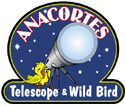NASA and ESA Space Telescopes Lock-in on the Brightest Gamma Ray Burst Ever Recorded

An explosive Gamma-Ray Burst (GRB), the brightest ever detected, lit up in the sky on October 9, 2022. This image of the afterglow of GRB 221009A was captured about an hour after the GRB was first detected. The bright rings form as a result of X-rays scattered from otherwise unobservable dust layers within our galaxy that lie in the direction of the burst. (Image Credit: NASA, Swift, A. Beardmore - University of Leicester)
NASA and ESA Space Telescopes Lock-in on the Brightest Gamma Ray Burst Ever Recorded
Astronomers around the world were captivated by an unusually bright and long-lasting pulse of high-energy radiation that swept over the Earth on October 9, 2022. The emission came from a Gamma-Ray Burst (GRB) – the most powerful class of explosions in the universe – and ranks as the most luminous event ever recorded. A Gamma-Ray Burst is a super energetic explosion and this one originated in the constellation Sagitta. The signal of the burst – called GRB 221009A – was picked up by many observatories. Some suddenly noticed an increase in their detection of high-energy emissions. Others were pointed towards the source soon thereafter. The event took place some 1.9 billion years ago and likely indicates the birth of a black hole.
The GRB provided an unexpected occasion for different NASA and ESA missions to come together and study the same astronomical event.
The wave of X-rays and gamma rays that passed through the solar system triggered detectors aboard NASA's Fermi Gamma-Ray Space Telescope, Neil Gehrels Swift Observatory, Wind spacecraft, as well as others. Telescopes around the world immediately turned to the location in the sky to study the aftermath, and new observations continue.
The energetic particle detector EPHIN on the SOHO spacecraft and the non-star object counter in the Sky Mapper instrument on the Gaia spacecraft were also triggered and picked up the signal at the same time. Gaia engineers were puzzled at first by this abnormal signal but soon discovered they had measured GRB 221009A.
The ESA-led Integral, XMM-Newton, Solar Orbiter, and BepiColombo missions also noticed the burst. Solar Orbiter detected X-rays of the burst with its STIX instrument. Its EPD instrument detected energetic particles that were created after interaction of the high-energetic emission with the spacecraft itself. BepiColombo measured the incoming gamma rays and the data continues to be analyzed.
Called GRB 221009A, the explosion provided an unexpectedly exciting start to the 10th Fermi Symposium, a gathering of gamma-ray astronomers now underway in Johannesburg, South Africa. “It’s safe to say this meeting really kicked off with a bang – everyone’s talking about this,” said Judy Racusin, a Fermi deputy project scientist at NASA’s Goddard Space Flight Center in Greenbelt, Maryland, who is attending the conference.
The signal, originating from the direction of the constellation Sagitta, had traveled an estimated 1.9 billion years to reach Earth. Astronomers think it represents the birth cry of a new black hole, one that formed in the heart of a massive star collapsing under its own weight. In these circumstances, a nascent black hole drives powerful jets of particles traveling near the speed of light. The jets pierce through the star, emitting X-rays and gamma rays as they stream into space.
The burst also provided a long-awaited inaugural observing opportunity for a link between two experiments on the International Space Station – NASA’s NICER X-ray telescope and a Japanese detector called the Monitor of All-sky X-ray Image (MAXI). Activated in April, the connection is dubbed the Orbiting High-energy Monitor Alert Network (OHMAN). It allows NICER to rapidly turn to outbursts detected by MAXI, actions that previously required intervention by scientists on the ground.
“OHMAN provided an automated alert that enabled NICER to follow up within three hours, as soon as the source became visible to the telescope,” said Zaven Arzoumanian, the NICER science lead at Goddard. “Future opportunities could result in response times of a few minutes."
The light from this ancient explosion brings with it new insights into stellar collapse, the birth of a black hole, the behavior and interaction of matter near the speed of light, the conditions in a distant galaxy – and much more. Another GRB this bright may not appear for decades.
According to a preliminary analysis, Fermi’s Large Area Telescope (LAT) detected the burst for more than 10 hours. One reason for the burst’s brightness and longevity is that, for a GRB, it lies relatively close to us.
“This burst is much closer than typical GRBs, which is exciting because it allows us to detect many details that otherwise would be too faint to see,” said Roberta Pillera, a Fermi LAT Collaboration member who led initial communications about the burst and a doctoral student at the Polytechnic University of Bari, Italy. “But it’s also among the most energetic and luminous bursts ever seen regardless of distance, making it doubly exciting.”
For more information:
https://astromart.com/news/show/gamma-ray-burst-tops-the-charts-as-the-brightest-ever-seen
https://astromart.com/news/show/nasa-telescopes-join-forces-to-observe-unprecedented-grb-explosion
https://astromart.com/news/show/clemson-astronomers-help-shed-light-on-gamma-ray-burst-mystery
https://astromart.com/news/show/record-breaking-gamma-ray-burst-temporarily-blinds-nasas-swift
https://astromart.com/news/show/nasas-swift-detects-the-most-distant-object-to-date-in-the-universe
https://astromart.com/news/show/fermi-spots-the-biggest-baddest-gamma-ray-blast-ever-seen
https://astromart.com/news/show/deadly-nearby-gamma-ray-burst-is-highly-unlikely
Astromart News Archives:
https://www.astromart.com/news/search?category_id=3&q=.
Check out some of my favorite Words of Wisdom:
https://astromart.com/news/show/words-of-wisdom-my-favorite-quotable-quotes
https://astromart.com/news/show/words-of-wisdom-my-favorite-proverbs-from-around-the-world
Do you enjoy reading these postings?
Then click here and buy the Astromart staff a cup of coffee (and maybe even some donuts):
https://astromart.com/support-options
Funding Member
Sponsors
- Desert Sky Astro Products
- AstroMart LLC
- Astromart Customer Service
- BW
- Rouz Astro
- RemoteSkies.net
- Anacortes Telescope
- APM-Telescopes
- ASTROPHOTOGRAPHY BY MARTIN PUGH
- Matsumoto Company
- SellTelescopes.com
- Waite Research
- BBLABS LLC
- astronomy-shoppe
- Bob's Knobs
- OMI OPTICS USA LLC
- FocusKnobs
View all sponsors



